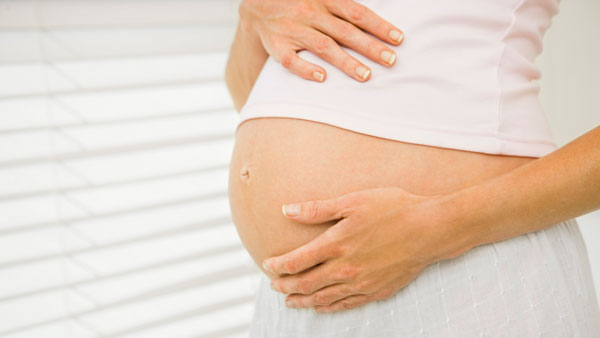Updated on July 12, 2022.
When a young, otherwise healthy person dies suddenly—while they’re playing a sport or even while they’re sleeping—an undiagnosed inherited or familial arrhythmia is often to blame.
Sudden cardiac death (SCD) may result from cardiac arrest, which occurs when the heart’s electrical system unexpectedly malfunctions. This causes its upper and lower chambers (known as atria and ventricles) to stop beating, or contracting and relaxing as they should.
In the United States alone, it’s estimated that more than 356,000 sudden cardiac arrests occur outside of the hospital each year, based on research from the American Heart Association. Most of these events are fatal, and about 2,000 deaths from sudden cardiac arrest occur in people under the age of 25, according to the Centers for Disease Control and Prevention (CDC).
“Sudden cardiac arrest is common enough that if you look at your watch, it occurs once every 90 seconds,” says Charles Fuenzalida, MD, an electrophysiologist with Aurora Denver Cardiology Associates, who practices at The Medical Center of Aurora in Colorado.
Irregular rhythms tied to sudden cardiac death
In up to about one-third of cases in people under age 40, sudden cardiac arrests are linked to inherited arrhythmias. There are four conditions, in particular, that are often underlying these tragic events among seemingly healthy, young adults, including:
Hypertrophic cardiomyopathy (HCM): is usually inherited and triggered by a mutation in some of the genes in heart muscle proteins. The condition causes the heart muscle to become abnormally thick, making it harder for the heart to pump blood properly. People with HCM can develop problems with their heart's electrical system, resulting in dangerous arrhythmias. Some with HCM have no symptoms, while others have symptoms after exertion.
Keep in mind, these deaths are still rare. Anyone with a parent who was diagnosed with HCM has a 50 percent chance of inheriting the genetic mutation for the condition.
Brugada syndrome: Associated more with children and adolescents than adults, this heart rhythm disorder may be linked to a mutation in one of several genes. This includes the SCN5A gene, which triggers ventricular tachycardia (VT) that can lead to ventricular fibrillation—a potentially fatal irregular heartbeat in the heart's lower chambers.
Brugada syndrome causes the heart to beat too quickly, impairing the flow of blood throughout the body. This type of arrhythmia may cause fainting or even death, especially during sleep or rest. It could be inherited from just one parent, but this is less common. It may also affect those with no family history of the disorder. Although having a fever doesn't cause this disorder, a high temperature can irritate the heart and lead to a Brugada-triggered fainting spell or sudden cardiac arrest, particularly among children.
Catecholaminergic polymorphic ventricular tachycardia (CPVT): This inherited arrhythmia is often linked to mutations in one of two genes—RYR2 and CASQ2. These genes are involved in the production of specific proteins that help maintain a steady heart rhythm.
People with CPVT may develop a very fast and irregular heartbeat known as ventricular tachycardia, which is triggered by emotional stress or physical activity. The arrhythmia, which starts in the heart's lower chambers, may be life-threatening if it lasts for more than a few seconds. Since SCD is often the first sign of CPVT, screening is essential for early detection and treatment of the condition.
Long QT syndrome (LQTS): This disorder causes the lower chambers of the heart to take too long to contract and release, which can lead to fainting, seizures, and sudden cardiac death. Acquired LQTS may be caused by certain medications, electrolyte abnormalities such as low body potassium (hypokalemia), or certain medical conditions, but some people are born with the condition. There are three main genes currently linked to most cases of inherited LQTS: KCNQ1, KCNH2, and SCN5A. There are several types of this disorder, which may trigger arrhythmias during physical activity, during high emotional states, or during sleep.
Detecting inherited arrhythmias
Some people with an inherited arrhythmia may not have any symptoms but others may develop warning signs that shouldn’t be ignored, including:
- Heart palpitations
- Seizures
- Light-headedness, dizziness, or fainting, particularly during physical exercise or exertion, or during emotional stress
- Trouble breathing, weakness, or fatigue
- Unexplained drowning or near drowning, possibly due to fainting while swimming
- Noisy gasping during sleep, possibly due to an irregular heart rhythm
When evaluating patients for arrhythmias, healthcare providers (HCPs) typically begin by taking a thorough medical history, says Dr. Fuenzalida. If you have a close relative with an inherited arrhythmia, you’re at higher risk. For example, having a family member who experienced sudden cardiac arrest after swimming or diving is a clue about a potential LQTS arrhythmia.
A physical exam will also be performed, Fuenzalida adds. Your HCP will look for swelling in your lower extremities, check your pulse, listen for any abnormal heart or lung sounds, and ask about your symptoms, such as unexplained fainting.
You should discuss your individual risk factors and symptoms with your HCP and determine what, if any, tests you need.
If there are signs that a familial arrhythmia may be in play, certain tests may be ordered, including an electrocardiogram (EKG or ECG)—a noninvasive test that assesses the electrical activity of the heart. Your HCP may also have you undergo an exercise stress test or imaging tests to get a more accurate picture of the size and shape of your heart.
In some cases, it may be important to monitor the heart’s electrical activity over time. If so, you may be asked to wear a portable device known as a Holter monitor or an adhesive patch called the Zio Patch. If your HCP suspects that you have a potentially life-threatening arrhythmia, a more invasive test, known as an electrophysiology study, may also be ordered to analyze your heart’s electrical system.
Based on these tests results, your HCP may suggest that you consider genetic testing.
Genetic testing isn’t for everyone
Since many of the gene mutations responsible for inherited arrhythmias have been identified, genetic testing can help detect these disorders. But it’s by no means the best or only option and it typically isn’t the first step, Fuenzalida points out.
“Genetic testing is helpful in certain situations but it’s not for everyone,” he says. “People need to understand its limitations and know it’s not going to answer all the questions that occur.”
If there is a possible genetic cause for an inherited arrhythmia, a genetic test may be offered to your close relatives who are also at higher risk. If a known gene mutation isn’t found, you may still have an irregular heartbeat—it’s just that your genes won’t put you at higher risk.
Managing an inherited arrhythmia
If you’re at genetically high risk for an inherited arrhythmia, making some heart-healthy lifestyle adjustments could help reduce your risk of triggering an irregular heartbeat. This may include avoiding certain medications, caffeine or other stimulants. Following a healthy diet, maintaining a healthy weight, not smoking, and managing stress can also help.
If you’ve been diagnosed with one of these heart rhythm disorders, your HCP may also prescribe medication or recommend one of the following procedures or devices to help regulate your heartbeat:
- Cardioversion: This procedure uses external low-energy electric shocks to restore a normal heart rhythm.
- Catheter ablation: This procedure involves making small scars in the heart tissue to block abnormal electrical signals. (It does not affect the function of your heart in any other way.)
- Implantable cardioverter defibrillators (ICDs): This surgically implanted device can correct an arrhythmia by sending an electric shock to the heart when it is needed.
- Pacemakers: This small, surgically implanted device uses electrical pulses to help the heart maintain a steady rhythm in the case of slow heartbeats.
If you have arrhythmia, be sure to also let your HCP know about any new or worsening symptoms and avoid activities that could trigger your arrhythmia. Be sure to ask your HCP if it’s safe for you to swim or engage in other high-intensity exercises or sports.
It’s also important to talk to your HCP before taking any over-the-counter supplements or remedies, which could trigger an arrhythmia or interfere with medications you’re taking.
Correction: An earlier version of this article overstated the degree to which sudden cardiac arrests are linked to inherited arrhythmias. The text has been amended to indicate that the association occurs in roughly one-third of cases in people under age 40.







